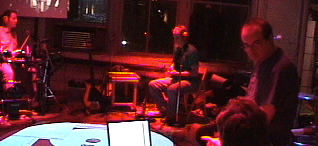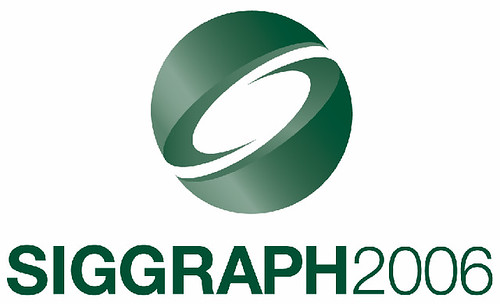Thank you everyone! These shows where we try to pull together something new are admittedly very very hard work and very taxing. I was absolutely exhausted driving home and fell asleep as soon as I walked in the door of my house last night.
This morning though, reflecting on the performance, I think the music was really wonderful and beautiful. Gorgeous layers in "hey" , rich, intense sounds in the PureJoy game when it settled in. Swing Gitan was such a nice counterpoint to the other sounds, and although I can't recall if we managed to turn on the random mode for Never Grumbling But Sometimes during the performance, when we played it in random order in rehearsal it was so fascinating how well it worked to reconstruct it in this way.
As we went into the show, we were still learning how to handle the transitions and remember the functions of all of the buttonry. The sheer mass of equipment and cabling we had to manage was daunting. For a little while there we were somewhere it was a little more like being in the army corps of engineers than in a band. Of course any unfamiliar instrument or system feels unwieldy at first - just think back to your early days of playing your primary instrument! But remarkably we got beyond all of that in a very short period of time, and we actually had a glimpse of the musical promise in this system. We got beyond buttons to music and it was exciting - it sounded beautiful!
For me, it was such a pleasure to lay down harmony lines one after another within everything else that was going on, and just jamming on sections knowing that all of the high level responsibility for thinking about where the jam was going was taken care of. We managed it of course because you guys are all such tremendous musicians in addition to being in Lauren's words, "the sweetest bunch of guys you could ever want to have tramping through your house at 3 in the morning." Well actually to do her credit, she didn't say anything about tramping, she just said you were all sweet.
I want to say an especially heartful thanks to Joe Rothermich for spending entire Saturdays hacking easy buttons, which I might add, WORKED PERFECTLY! And for videotaping and just overall contributing his great energy. And to Bret Bjurstrom for painting his wonderful and painstaking images and spending at least 5 hours repeating the same copy layer, export, click, select png, in photoshop in order to animate Never Grumbling But Sometimes. The organizing committee for the Art Gallery at SIGGRAPH 2006 did an excellent job! I also know I speak for everyone in saying thanks to Lauren for taking care of us while we were working so hard all week.
You know Dave and I were wondering aloud yesterday morning to each other why we do this. And despite my exhaustion, it was not at all a cynical question, just a reflective one during a quiet moment in the car. I guess the best answer I can come up with for myself is that we are part of a stream of human work that is bigger than us and longer than any one human lifetime. On the way home, I saw a car with a bumper sticker that said, "Music is everything that War is not," and I think I sort of slept on that. During the talk yesterday, I honored several people such as Viola Spolin for having contributed new ideas and new methods to the history of music and theater. Viola had a difficult time making money doing what she did actually, but in addition to her games forming the basis for Comedy Improv, and being used daily in almost every theater and film troupe in the Western world, the games she developed gave society tools for collaboration and creativity that go beyond the art world and are also used for example in summer camps and schools, and for training political mediators. To me it is to honor the work of people like her, that we work so hard to make our own small contribution to the human river of sounds and ideas.
So thanks once again to all of you, I am so honored to play with all of you!!!
Ben







